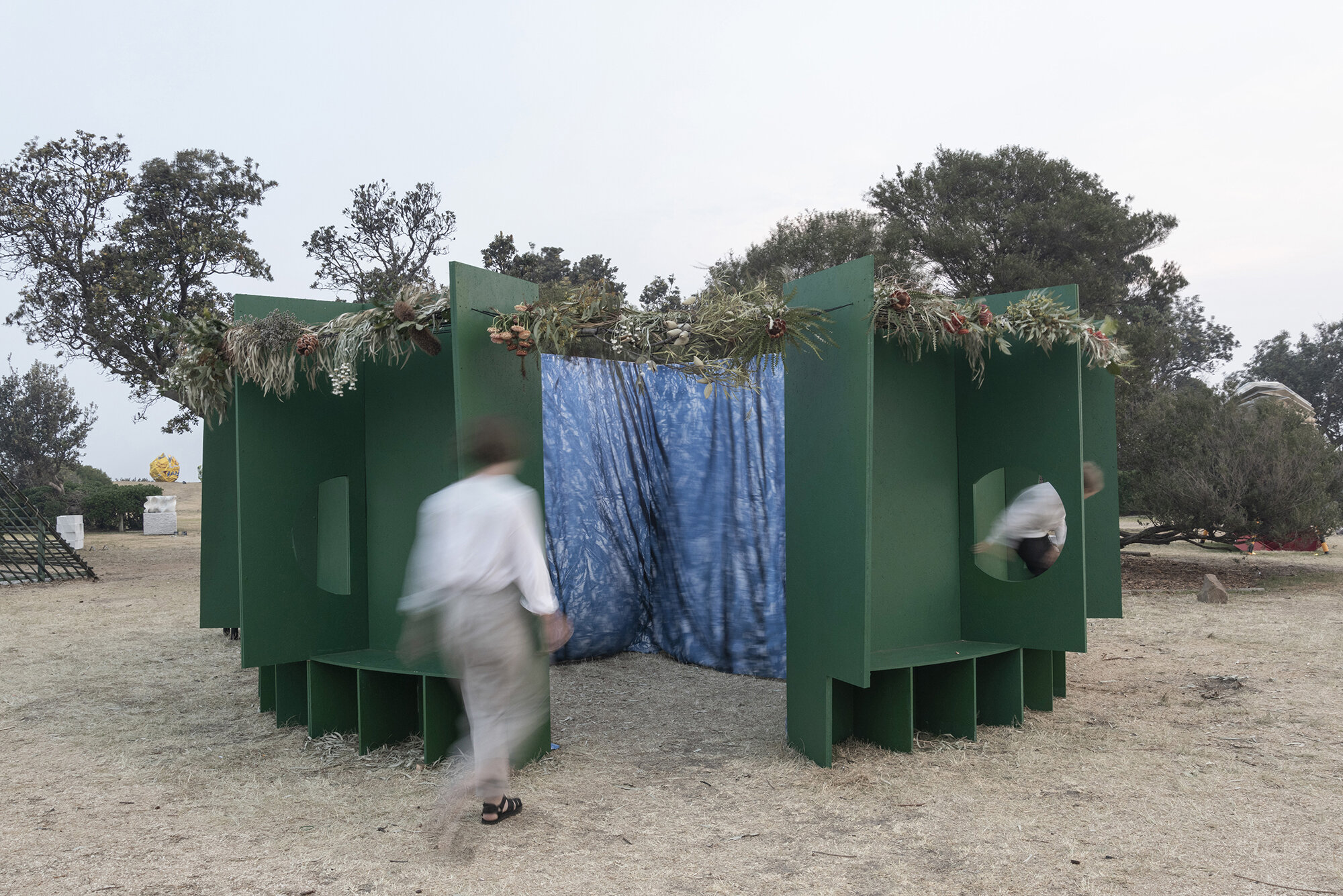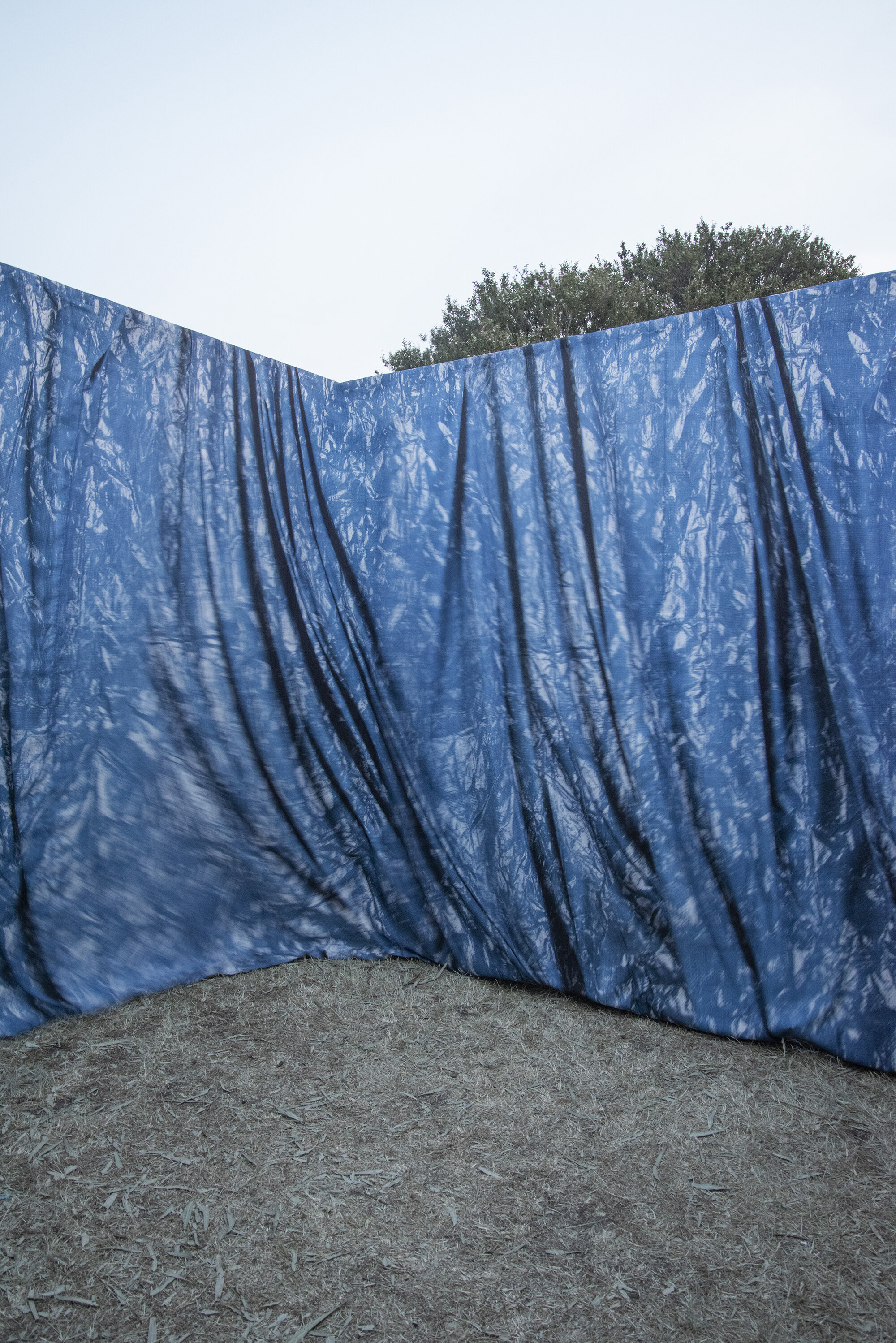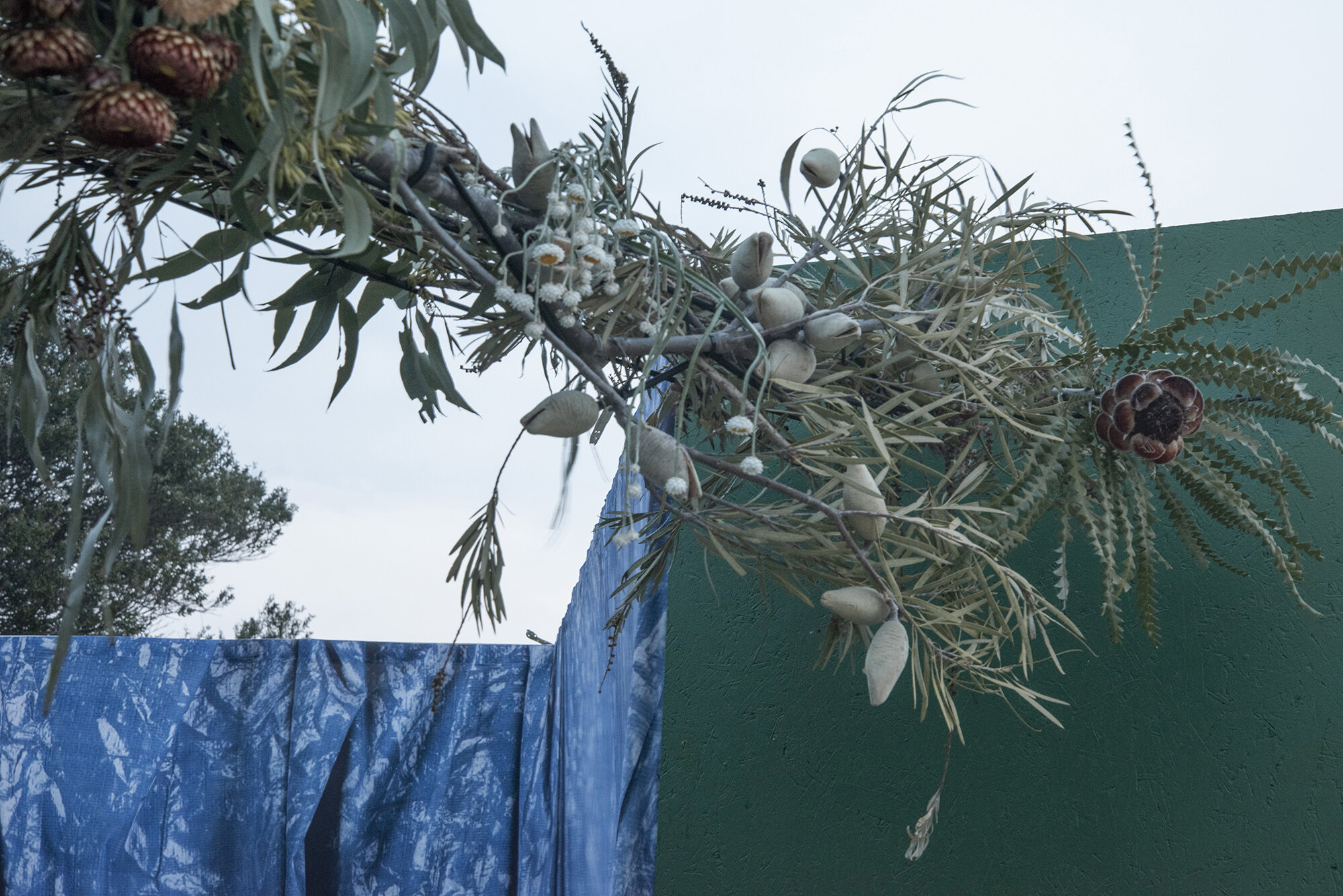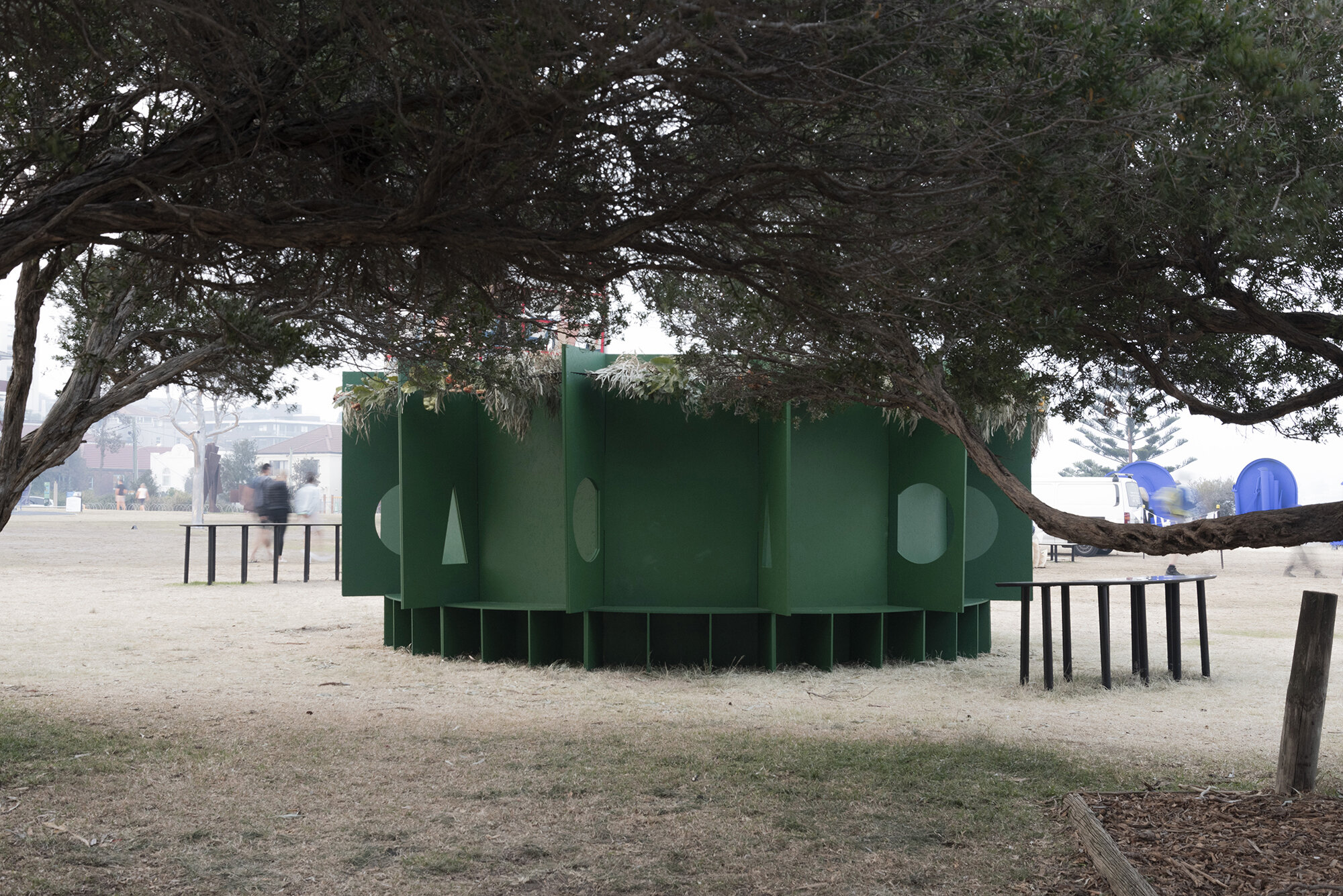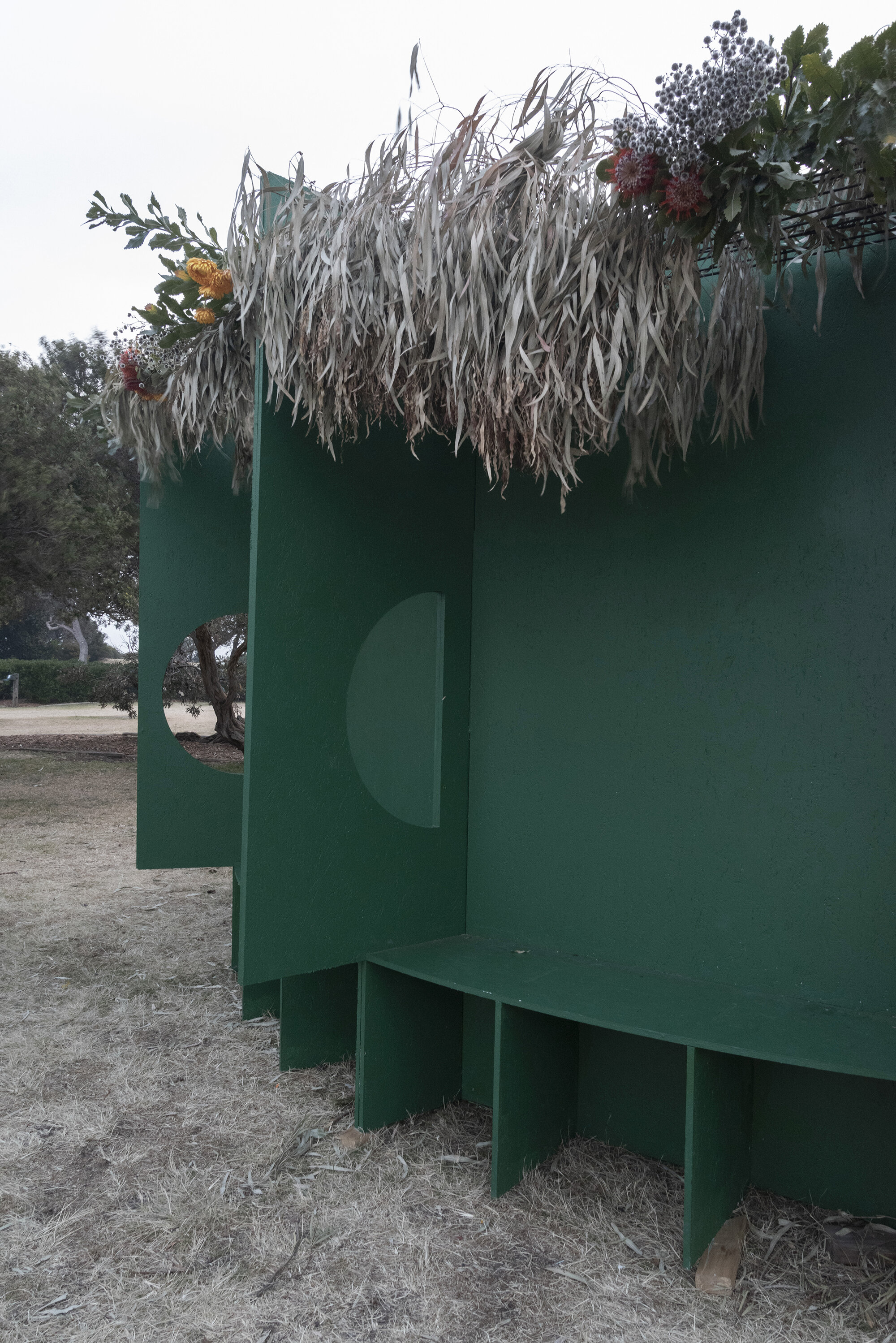Inside-Out Succah
In collaboration with Other Architects
Sculpture by the Sea, Bondi
29 October - November 10, 2019
240 x 580 x 580 cm
timber, dye-sublimation print on fabric, native flora
“Our design turns the traditional succah inside-out, inverting what is within and without... [it] welcomes visitors from all sides and orientates their view not inwards but outwards, towards the fragile beauty of the surrounding world.”
This design is inspired by history and adheres to the traditions of succah-making. There is no definitive succah shape or style, but rather some rules that dictate a minimum of enclosure and permanence. When you sit in a succah to share a meal or pass the time you should be able to see the sky, hear the wind and even feel the rain.
Our design turns the traditional succah inside- out, inverting what is within and without. In the centre of our succah, where you would normally find a table and chairs, there is only an empty void, open to the sky. The outer wall is made up of 11 small seating structures - each one its own, self-contained succah - which are linked together in a single collective circle. You might think of it as a meeting-place succah, a passing-time succah or perhaps a bus-shelter succah. The Inside-Out Succah welcomes visitors from all sides and orientates their view not inwards but outwards, towards the fragile beauty of the surrounding world.
The portable and ephemeral succah is a symbol of the resilience of Jewish culture, which over the centuries has proven itself capable of adapting to any context or regime while remaining distinct. Like Japan’s sacred Ise Shrine, which is dismantled and rebuilt every twenty years, the succah is not an object but a ritual, sustained through continual reconstruction.
Our succah is designed as a kit of parts that can be easily assembled, disassembled and packed away for another year. Each of its 11 sides is made from interlocking plywood shapes which have been cut from flat panels using a robotic drill and optimised to reduce material wastage.
Lining the interior is an artwork by Sydney artist Izabela Pluta. Her artwork appropriates the generic blue tarpaulin fabric commonly used as a succah covering in Sydney. Using a multi- layered photographic and printing process, Pluta creates illusory billows and folds in the tarpaulin's surface.
Other Architects is an architectural office driven by curiosity and uncertainty. We believe that the best architecture - whether large or small, modest or grand, temporary or permanent - heightens awareness of the world and our place within it.

